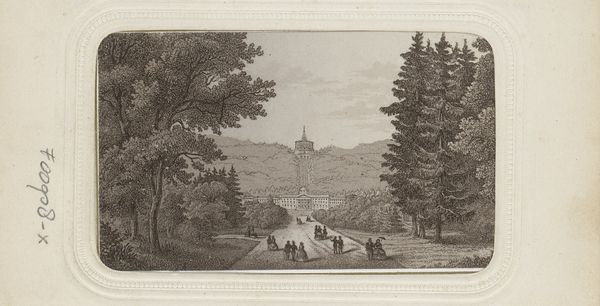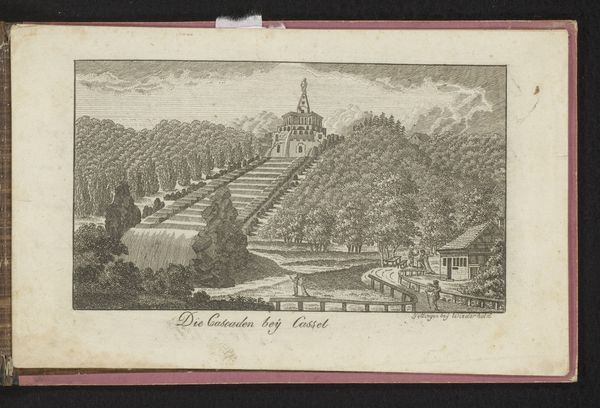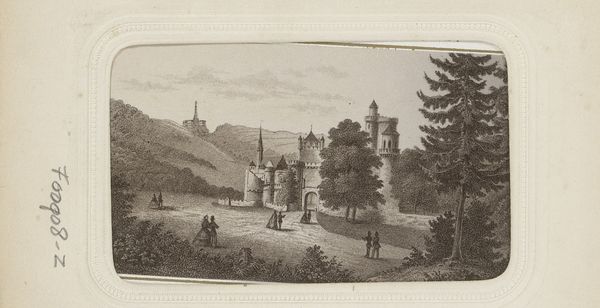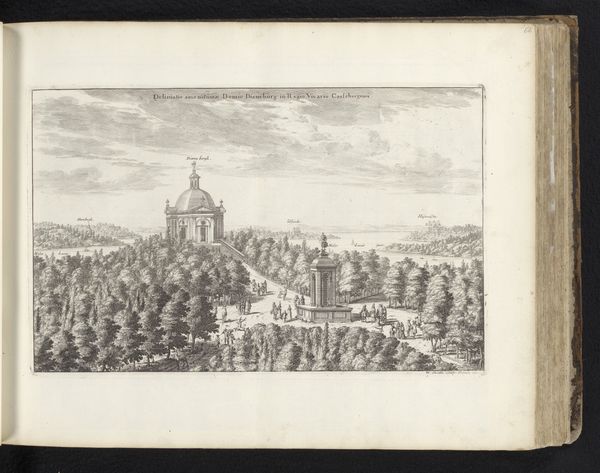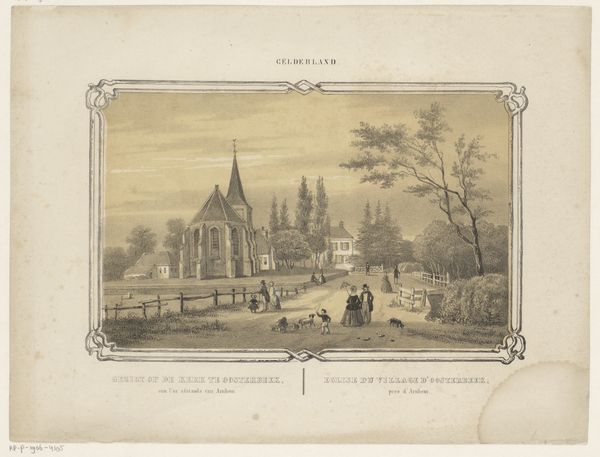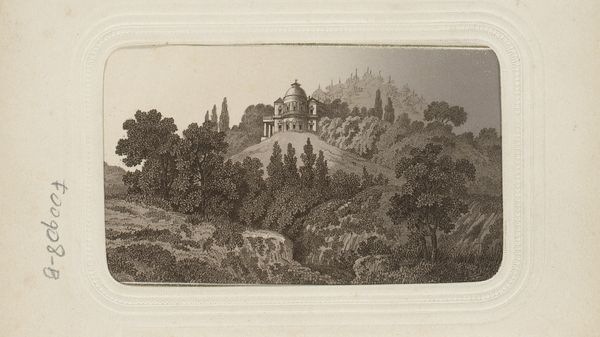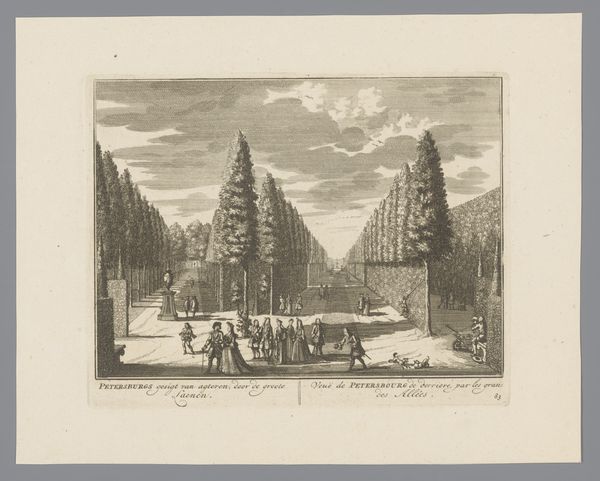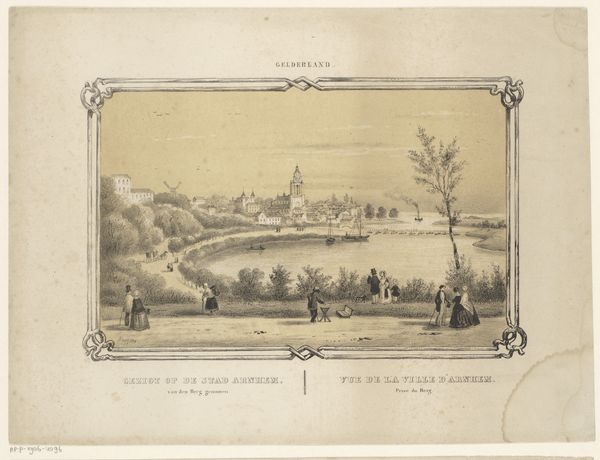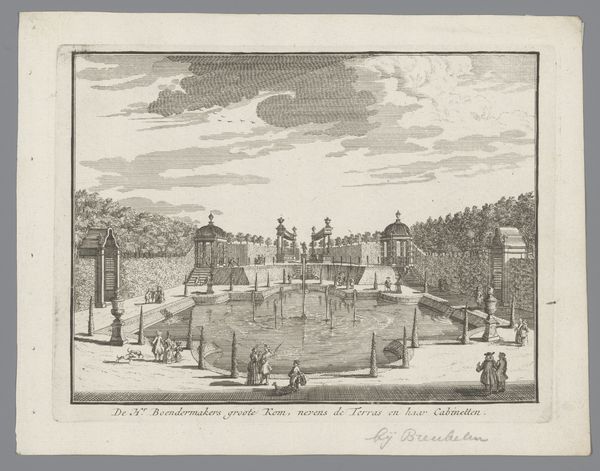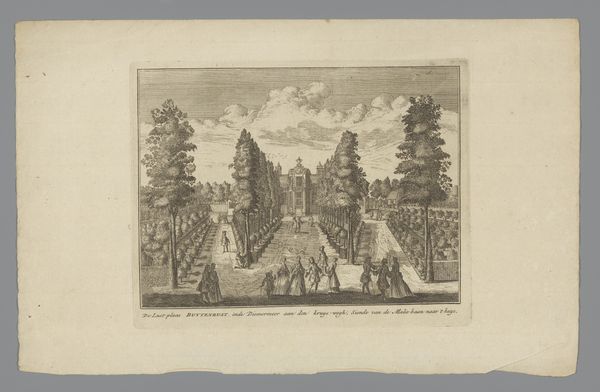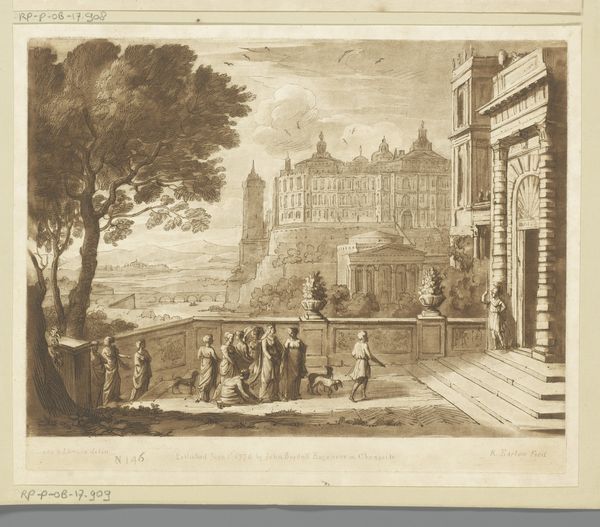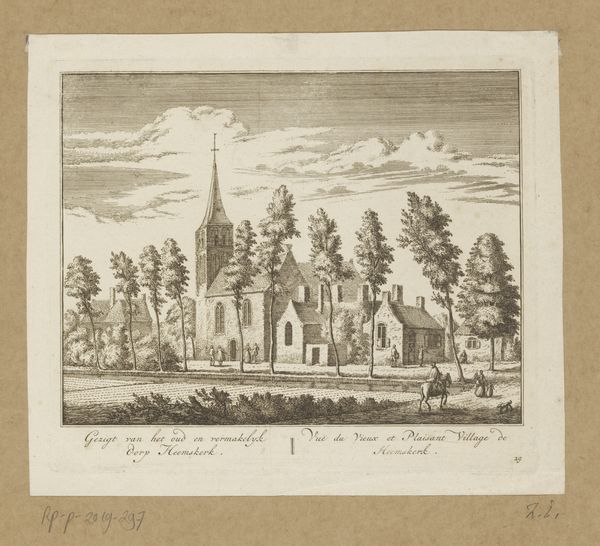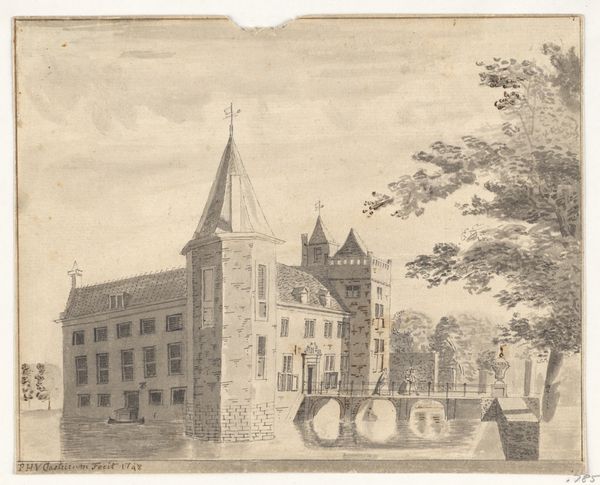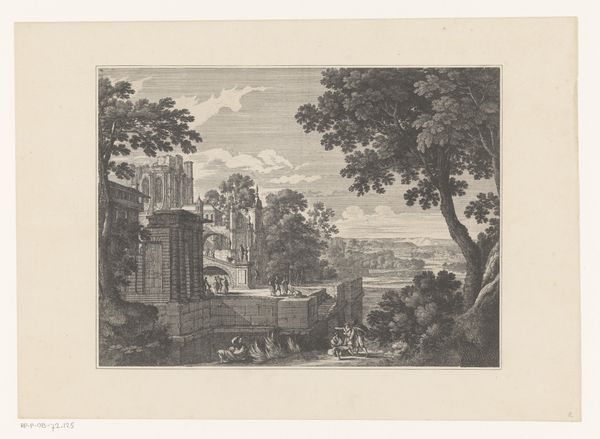
Fotoreproductie van een prent van het Herculesmonument met de grote cascaden bij Schloss Wilhelmshöhe 1860 - 1885
0:00
0:00
Dimensions: height 67 mm, width 110 mm
Copyright: Rijks Museum: Open Domain
Curator: Here we have a photomechanical print dating from 1860 to 1885, entitled "Fotoreproductie van een prent van het Herculesmonument met de grote cascaden bij Schloss Wilhelmshöhe", attributed to Jm. v. Ph. Frey. It combines the printmaking techniques of etching to produce this view. Editor: My goodness, talk about drama! That cascading water is mesmerizing, even in monochrome. It feels like a stairway to heaven, or at least to some grand mythological perch. Curator: Precisely! Note the symmetrical organization of the architecture, descending toward the viewer. This composition leads our eye along defined lines to the bottom and then vertically, reinstating our initial point of perspective, suggesting order, control. This control is something the Romantic era of art relished representing. Editor: The people at the base of the cascade...they are practically dwarfed by the landscape and the architecture. Do you think it’s some commentary on our place in nature, or something to do with human vanity? Like, "look what we puny mortals can build!" Curator: Possibly both. The picturesque quality of the wild surroundings contrast strongly with the geometry of the Hercules monument, that has a definite point on the far end. There is a certain sublime grandeur being conveyed with these dramatic opposites and rendering them beautifully in a monochrome format! Editor: It really gets the imagination flowing! Though, being honest, I am also reminded of a rather ornate water feature at a Vegas hotel. But, okay, probably a less refined connection from me to Romanticism's interest in the sublime! Curator: Although an etcher and engraver, Jm. v. Ph. Frey displays a rather strong command of capturing atmospheric perspective. These features heighten the experience with delicate strokes to create dynamic light and shadow patterns, and with careful arrangement. Editor: I wonder what it was like to stand there, centuries ago, gazing at this monument. The dedication that took must’ve been remarkable and worth having an image of! Curator: Indeed, reflecting upon this, perhaps we have also reaffirmed the artist's dedication through art historical study. Editor: A worthy pursuit to undertake by us all.
Comments
No comments
Be the first to comment and join the conversation on the ultimate creative platform.
